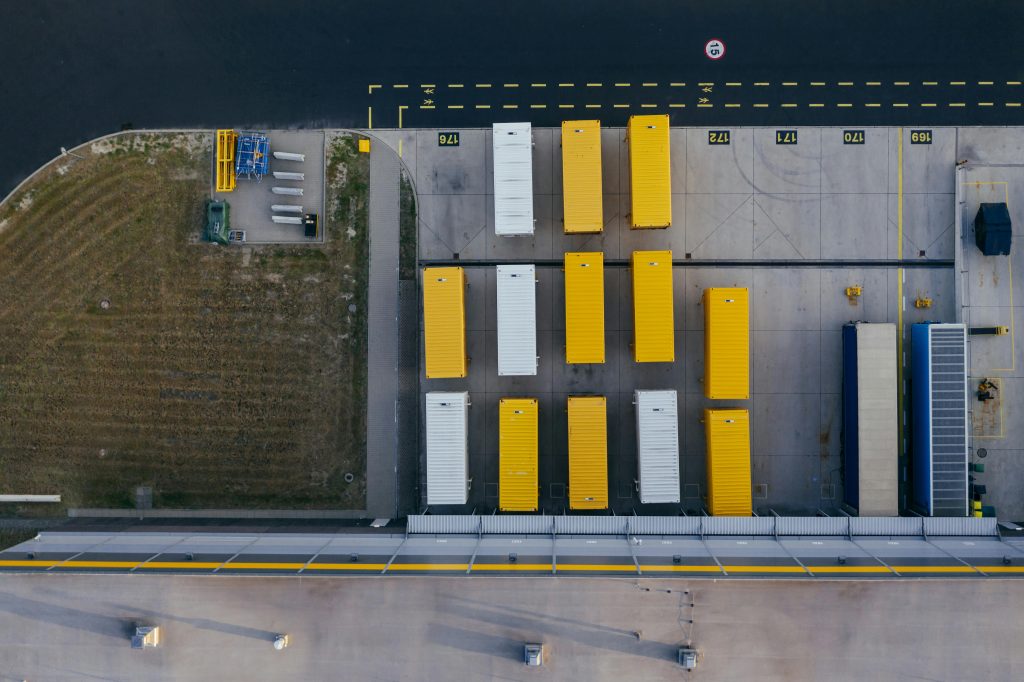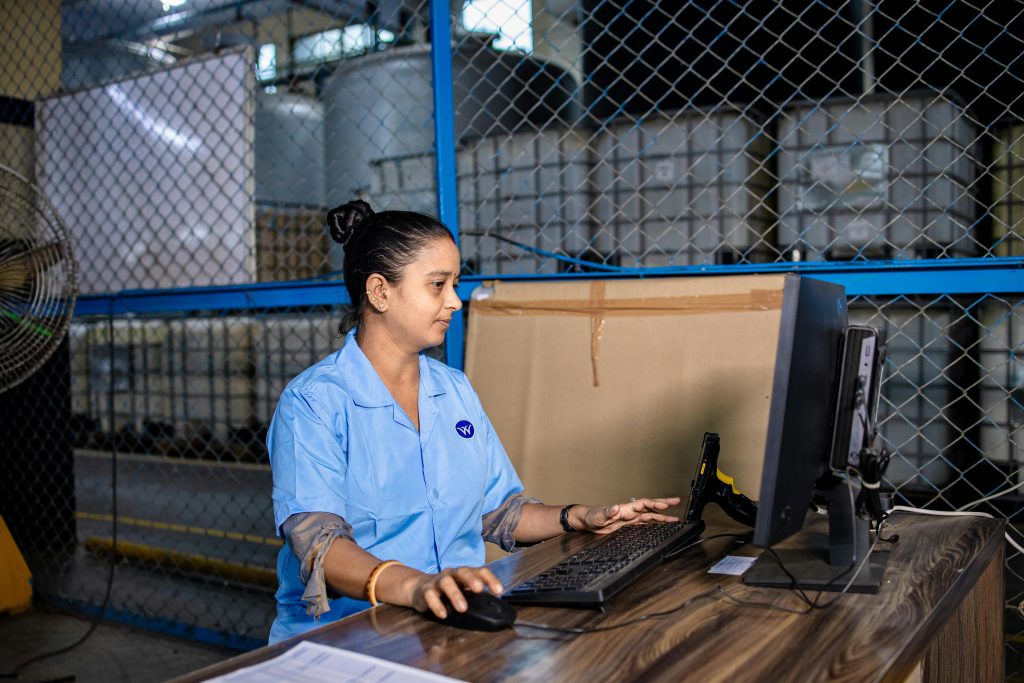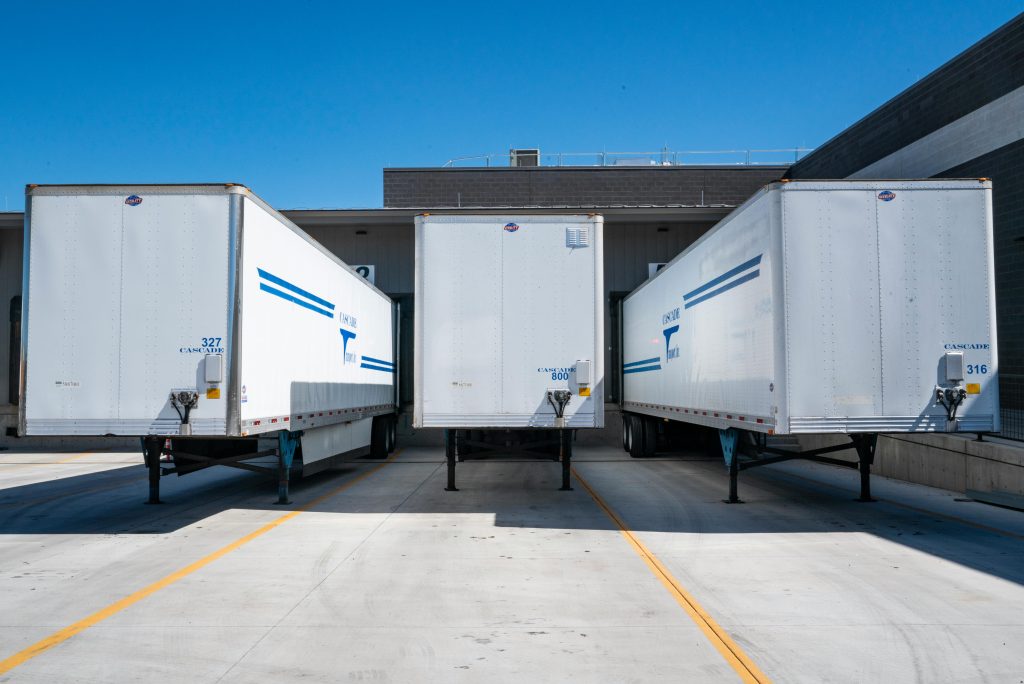Introduction
In today’s fast-paced supply chain, retail, and manufacturing environments, choosing the right automatic identification technology can make or break operational efficiency. Barcode and RFID (Radio Frequency Identification) scanning are two of the most widely adopted methods—but which one best fits your needs? In this comprehensive guide, we’ll unpack the core advantages of barcode versus RFID scanning, examining cost, speed, accuracy, and implementation complexity. Whether you’re a small-business owner exploring inventory tracking, a warehouse manager aiming to reduce shrinkage, or an IT professional evaluating asset-management systems, understanding these benefits will help you make an informed decision. Let’s dive in and discover which technology aligns with your business objectives.

Understanding Barcode and RFID Technologies
Before comparing benefits, it’s essential to grasp the fundamentals of each technology.
Barcode Scanning
A barcode is a series of parallel, varying-width lines (1D) or a matrix of squares/dots (2D) printed on a label or product packaging. When a scanner’s laser or camera reads the pattern, it decodes the underlying numeric or alphanumeric data.
Example: Every time you scan a grocery item at checkout, the cashier’s barcode reader translates that pattern into a product code, fetching price and inventory details.
RFID Scanning
RFID utilizes tiny microchips (integrated circuits) attached to antennas (tags). These tags communicate wirelessly with an RFID reader via radio waves. There are three main types of RFID tags:
- Passive: No onboard battery; powered by the reader’s electromagnetic field.
- Active: Battery-powered, offering a longer read range.
- Semi-passive: Battery-assisted but still relies on the reader’s signal to communicate.
Example: In a warehouse, an RFID portal can detect multiple tagged pallets as they pass through a gate, logging each SKU automatically—even if the forklift driver doesn’t pause to scan each pallet.
Understanding these basics sets the stage for evaluating how each method helps streamline operations and where trade-offs arise.
Key Benefits of Barcode Scanning
1. Cost-Effectiveness
Barcodes are widely recognized for their low entry cost, making them ideal for businesses with tight budgets.
- Minimal Upfront Expenses:
- Printing a standard 1D barcode label can cost just a few cents per label.
- Many desktop or handheld barcode scanners are available for under $200 USD, compared to RFID readers that can range from $500 to $2,000 USD per unit.
- No Licensing Fees:
- Barcode symbologies like UPC, EAN, or Code 128 are open standards; you don’t pay per scan or tag.
- Scalable to Any Size:
- Start with a small batch of thermal-print labels and an entry-level scanner. As your business grows, add more scanners and label printers without complex integration.
Real-Life Analogy:
Think of barcodes like photocopied library book barcodes—easy to generate, print, and replace. You don’t need an electrician to wire up each book; you just stick on a label.
2. Simplicity and Ubiquity
Barcodes have been around since the 1970s and remain the global default for product identification—so support and familiarity are widespread.

- Ease of Implementation:
- You can generate standard 1D or 2D barcodes with free online tools, Excel plugins, or off-the-shelf label software.
- No specialized technical expertise is required to set up a barcode system; most staff can be trained in minutes.
- Broad Ecosystem of Equipment:
- From low-cost corded scanners at a retail point-of-sale to rugged, industrial handhelds in warehouses, barcode readers come in countless form factors.
- Printers are equally diverse—thermal-transfer, direct thermal, desktop, industrial, and mobile.
- Compatibility with Existing Software:
- Virtually all ERP, WMS, and point-of-sale platforms already integrate barcode support. If you already have inventory software, adding a scanner is often “plug and play.”
3. Reliable in Controlled Environments
When labels remain intact and in view of the scanner, barcodes deliver consistently accurate reads.
- Precision in High-Resolution Data:
- 2D barcodes (e.g., QR codes, Data Matrix) can encode large amounts of information—URLs, batch numbers, expiry dates—within a small footprint.
- Minimal Interference Issues:
- Barcodes aren’t impacted by metal or liquids in the same way that RFID signals can be. In many manufacturing or cold-chain settings, a straightforward printed barcode label is less likely to fail due to environmental factors.
- Low Error Rate with Proper Labeling:
- When labels are printed at recommended dpi (dots per inch) and protected by laminates or film overlays, readability remains high for the intended lifespan.
4. Versatility for Diverse Use Cases
Barcodes aren’t just for retail checkout; they power asset tagging, document tracking, healthcare specimen labeling, and more.

- Shelf-Edge Labeling in Retail:
- Price checks, employee-managed inventory counts, and shelf restocking all rely on barcodes.
- Healthcare & Pharmaceuticals:
- Ensuring the correct patient receives the correct medication depends on barcode wristbands and medicine packages. FDA guidelines around 2D barcodes on prescription bottles underscore barcodes’ regulatory role.
- Event Ticketing and Membership Cards:
- Printed or mobile phone–displayed barcodes let event staff scan and validate in a second.
Code Snippet (Generating a Simple QR Code in Python):
pythonCopyEditimport qrcode # Data to encode data = "https://www.example.com/inventory/item/12345" # Create QR Code object qr = qrcode.QRCode(version=1, box_size=10, border=5) qr.add_data(data) qr.make(fit=True) # Generate the image img = qr.make_image(fill_color="black", back_color="white") img.save("item_qr.png")This snippet shows how easily you can generate a 2D barcode (QR code) to encode product URLs, batch numbers, or tracking information.
Key Benefits of RFID Scanning
1. Speed and Reduced Manual Intervention
RFID excels at reading multiple tags simultaneously (known as “anti-collision”) and without direct line of sight, dramatically speeding up processes.
- Bulk Scanning:
- An RFID reader can detect, decode, and log dozens (or even hundreds) of tags in a single sweep. Compare that to scanning 100 barcoded items one by one—RFID can cut scanning time by 70–90%.
- Hands-Free Operation:
- Place a pallet of tagged items on a conveyor belt or pass through an RFID gate and the system instantly records every tag. Warehouse staff no longer need to manually point a scanner at each label.
- Reduced Human Error:
- Because RFID requires no aiming at a barcode, there’s less chance of missing a scan or rescanning an item by accident.
Example:
In a high-volume distribution center, employees using RFID-equipped forklifts can automatically scan a stack of 50 tagged cartons in under 5 seconds—whereas barcode scanning could take 30–60 seconds for the same quantity.
2. No Line-of-Sight Requirement
Unlike barcodes, RFID tags broadcast their signal through plastic, cardboard, and many non-metallic materials.

- Reading Through Packaging:
- Boxed or shrink-wrapped products need no label presentation. An RFID antenna can “see” tags inside containers or behind walls, reducing the need to unpack or unwrap items.
- Hidden Asset Tracking:
- In manufacturing or repair facilities, tools or components can be tracked inside bins, wallets, or cases. The RFID system autonomously logs when an item enters or exits a storage area.
- Improved Worker Safety:
- In environments where picking lines are fast and items move on conveyor belts, workers don’t have to lean in to scan each barcode—reducing ergonomic strain.
3. Durability and Longevity
RFID tags tend to be more robust than adhesive barcode labels, especially in harsh operating conditions.
- Withstands Harsh Environments:
- Many RFID tags are encased in durable plastics, glass, or epoxy, allowing them to tolerate extreme temperatures, moisture, dust, and even chemical exposure.
- Resilient to Wear and Tear:
- Barcodes scratch, smudge, or fade over time. Once a barcode is unreadable, you must reprint and reapply a new label. Passive RFID tags, by contrast, often last for years without maintenance.
- Ideal for Reusable Asset Tags:
- For reusable containers, returnable transport items (RTIs), or equipment that changes hands frequently, an RFID tag can outlive multiple lifecycle iterations—minimizing replacement costs and downtime.
4. Higher Data Capacity and Security Options
RFID tags can store more data on-tag than a simple barcode, and advanced tags can implement security features.
- On-Tag Memory:
- Many passive RFID tags can store anywhere from 96 bits to several kilobytes of user memory. This allows for storing not just an identifier, but expiration dates, batch numbers, or maintenance logs directly on the tag.
- Password Protection and Encryption:
- Some RFID protocols (e.g., EPC Gen2, ISO 18000-6C) support password-protected memory zones and encryption keys. This makes it harder for unauthorized readers to interrogate or write to your tags.
- Real-Time Visibility & Analytics:
- Since RFID readers can automatically poll tags at set intervals, you can integrate real-time location systems (RTLS) to see exactly where high-value assets are within a facility—helping prevent loss, theft, or misplacement.
5. Enhanced Automation and Workflow Integration
By pairing RFID with middleware and IoT platforms, organizations can achieve sophisticated, automated workflows.

- Automated Reorder Triggers:
- Imagine a production line where every bin of parts is tagged. As the bin passes a checkpoint, inventory levels update automatically. When counts fall below a threshold, the system sends a purchase order to the supplier—no manual intervention required.
- Seamless Integration with ERP/WMS:
- Modern RFID solutions often integrate directly with enterprise resource planning (ERP) or warehouse management systems (WMS). This eliminates duplicate data entry, improving data accuracy and accelerating order fulfillment.
- Smart Shelving & Asset Gates:
- In retail, RFID-enabled shelves can sense when stock levels are low and trigger shelf-restocking alerts. In corporate settings, an RFID gate at a server room door can immediately log which tagged device leaves or enters the area.
Comparing Use Cases and Choosing the Right Solution
Choosing between barcode and RFID scanning often comes down to balancing cost, performance requirements, and operational complexity. Below, we compare common factors to guide your decision.
1. Cost vs. ROI
- Barcode Pros:
- Low initial investment (labels, scanners)
- Minimal ongoing costs (stick-on labels, occasional printer maintenance)
- RFID Pros:
- Higher start-up costs (tags, readers, antennas, middleware)
- Potentially higher lifetime value (tags reused, reduced labor costs, fewer errors)
- Decision Point:
If your business processes involve scanning thousands of SKUs daily and labor costs are high, RFID’s automation can deliver a fast ROI despite higher upfront costs. But for low-volume, budget-sensitive operations, barcodes often remain the more pragmatic choice.
2. Environment and Durability
- Barcode Strengths:
- Works well when labels stay exposed and intact (retail shelves, outpatient clinic)
- Less susceptible to interference from RFID-disrupting metals or liquids in some cases
- RFID Strengths:
- Ideal for harsh conditions: warehouses, manufacturing floors, cold storage, outdoor yards
- Tags often encased in rugged shells, withstanding shocks, moisture, and chemicals
- Decision Point:
If labels frequently rub off, tear, or get dirty—especially in dirty, wet, or high-movement environments—RFID tags offer longer lifespans and less rework.
3. Read Speed and Throughput Requirements
- Barcode Strengths:
- Sufficient when scanning individual items (point-of-sale, patient wristbands, small-batch picking)
- Scanners often fast and accurate if label placement is consistent
- RFID Strengths:
- Superior when bulk-reading is required: inbound pallets, returnable totes, staged shipment gates
- Automates inventory counting, reducing cycle count time from hours to minutes
- Decision Point:
For a small boutique conducting manual stock-takes once per month, barcodes are fine. But for a high-volume distribution center needing near-real-time visibility, RFID can scan entire truckloads in seconds.
4. Data Needs and Security

- Barcode Strengths:
- Encodes limited data (typically just an ID number or URL)
- Open to casual reading—anyone with a smartphone-mounted scanner can decode a standard 1D or 2D barcode
- RFID Strengths:
- On-tag memory can hold serial numbers, maintenance histories, or audit logs
- Can implement password-protected zones and encryption for secure data exchange
- Decision Point:
If you need lightweight identification for general tracking—barcodes suffice. If you need secure, detailed asset data stored directly on each tag (e.g., in aerospace, defense, pharmaceuticals), RFID is often mandatory.
5. Future Scalability and Ecosystem Integration
- Barcode Outlook:
- Continues to evolve through 2D codes (QR, Data Matrix) enabling smartphone scanning and mobile wallets.
- Extensive third-party integrations exist across dozens of software platforms.
- RFID Outlook:
- Early adopters increasingly integrate RFID with IoT devices, BLE beacons, and AI-driven analytics for predictive maintenance and real-time location systems (RTLS).
- Investment in RFID infrastructure can future-proof operations for smart-factory initiatives and Industry 4.0 transitions.
- Decision Point:
If your five-year plan includes digital transformation, warehouse automation, or IoT-driven analytics, RFID offers a more extensible platform—albeit at a higher upfront cost.
Real-World Examples
Retail Inventory Management

- Barcode Scenario:
A small apparel boutique uses barcode scanners and shelf tags. Employees manually scan each item during daily cycle counts, which takes roughly 1–2 hours for a 2,000-SKU inventory. Accuracy is around 98%, with occasional mislabeled tags. - RFID Scenario:
A regional department store piloting RFID tags on every garment. RFID readers mounted at the backroom and point-of-sale enable near-real-time stock counts. The same 2,000-SKU inventory takes under 15 minutes to audit, with 99.7% accuracy—translating into fewer out-of-stocks and higher sales.
Healthcare Asset Tracking
- Barcode Scenario:
A small clinic prints barcode labels for high-value equipment (IV pumps, ECG machines). Staff manually scan each device at shift change. Missing scans due to shift-change rush leads to occasional misplaced assets. - RFID Scenario:
A hospital system tags every wheelchair, infusion pump, and portable ECG with passive RFID. RFID antennas placed in hallways automatically log a device’s movement between floors. When a nurse needs a wheelchair, they query the system and find its last known location—saving staff up to 15 minutes per search.
Manufacturing Work-In-Process (WIP) Tracking
- Barcode Scenario:
At each assembly station, operators scan a barcode on the partially assembled unit before proceeding. Manual scanning ensures proper routing but can create bottlenecks if a station is understaffed. - RFID Scenario:
Each WIP unit travels on a conveyor with embedded RFID readers at every stage. As the unit passes each station, its progress is automatically logged. Real-time dashboards alert supervisors if a unit sits at a station longer than expected, enabling immediate corrective action.
Conclusion
Deciding between barcode and RFID scanning ultimately hinges on your organization’s budget, environmental conditions, throughput needs, and future technology roadmap. Barcodes remain the cost-effective, ubiquitous choice when operations involve lower volumes, controlled environments, and limited data requirements. Conversely, RFID shines in high-volume, harsh-environment settings where hands-free scanning, bulk reads, and on-tag data storage deliver substantial labor savings and improved accuracy. By weighing factors such as total cost of ownership, read speed, durability, and integration goals, you can select the ideal solution—or even leverage a hybrid approach—to optimize your supply chain, retail operations, or asset-tracking systems. Whichever path you choose, both barcode and RFID technologies continue to evolve, offering new features and efficiencies to help businesses stay agile and competitive.


